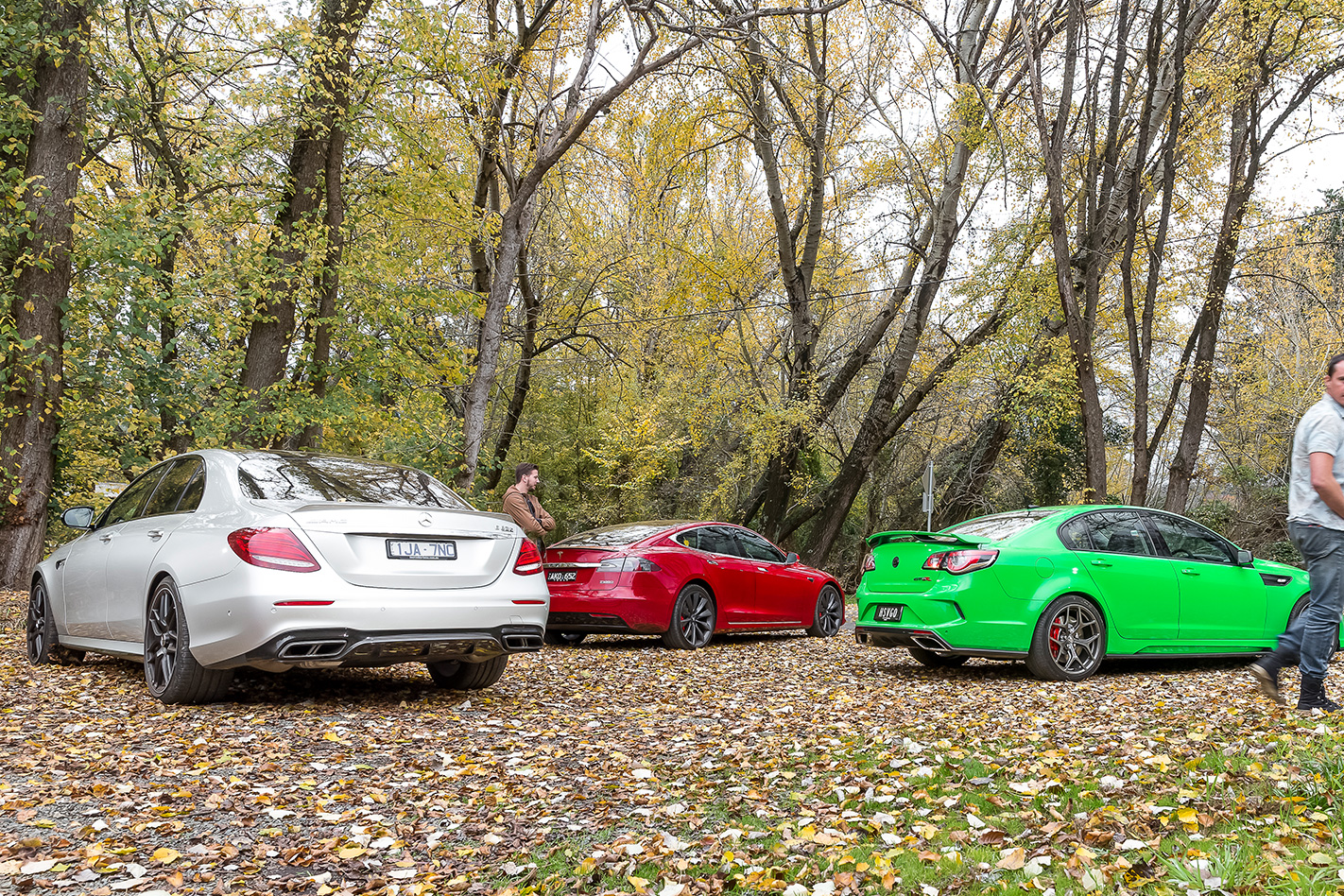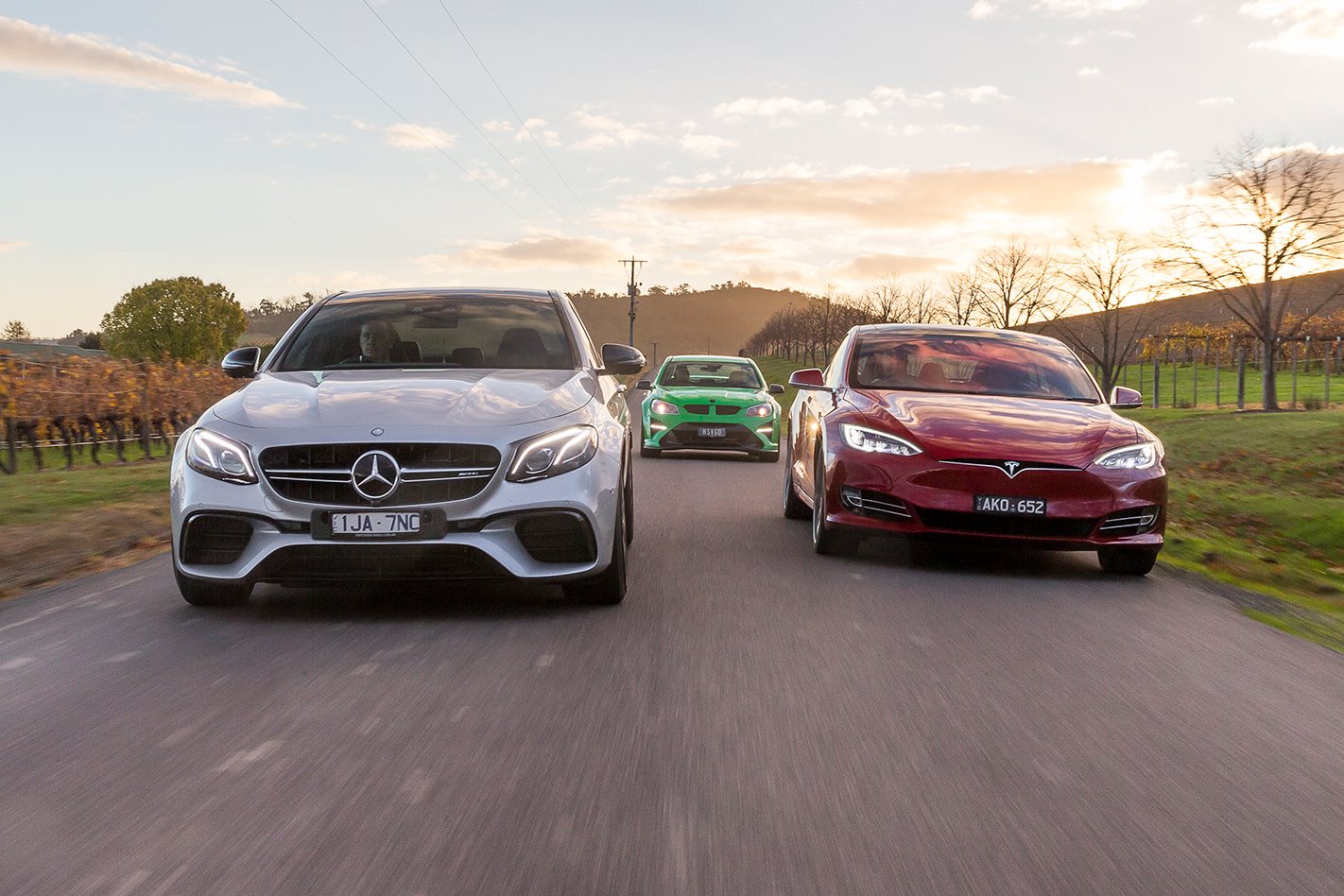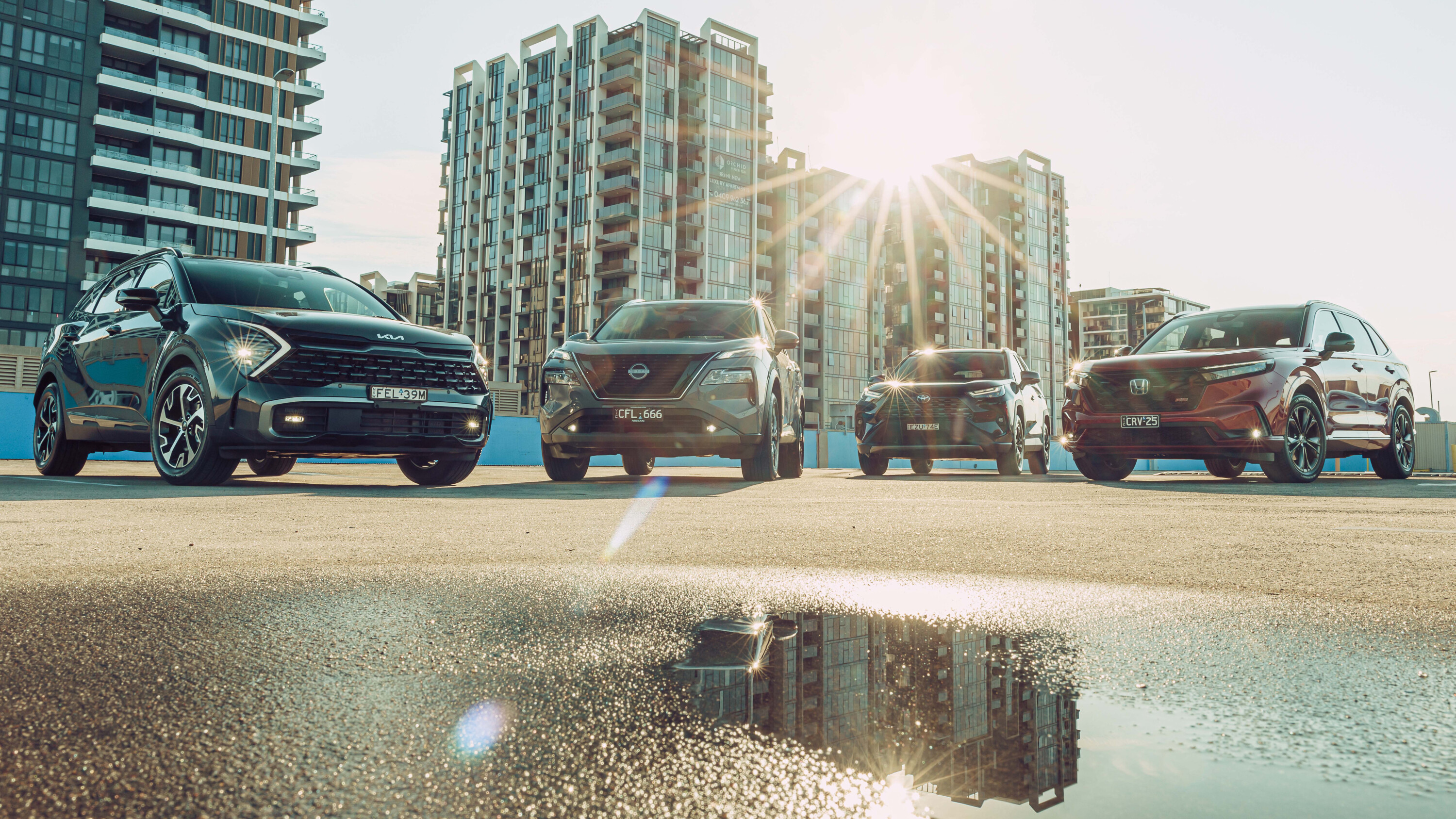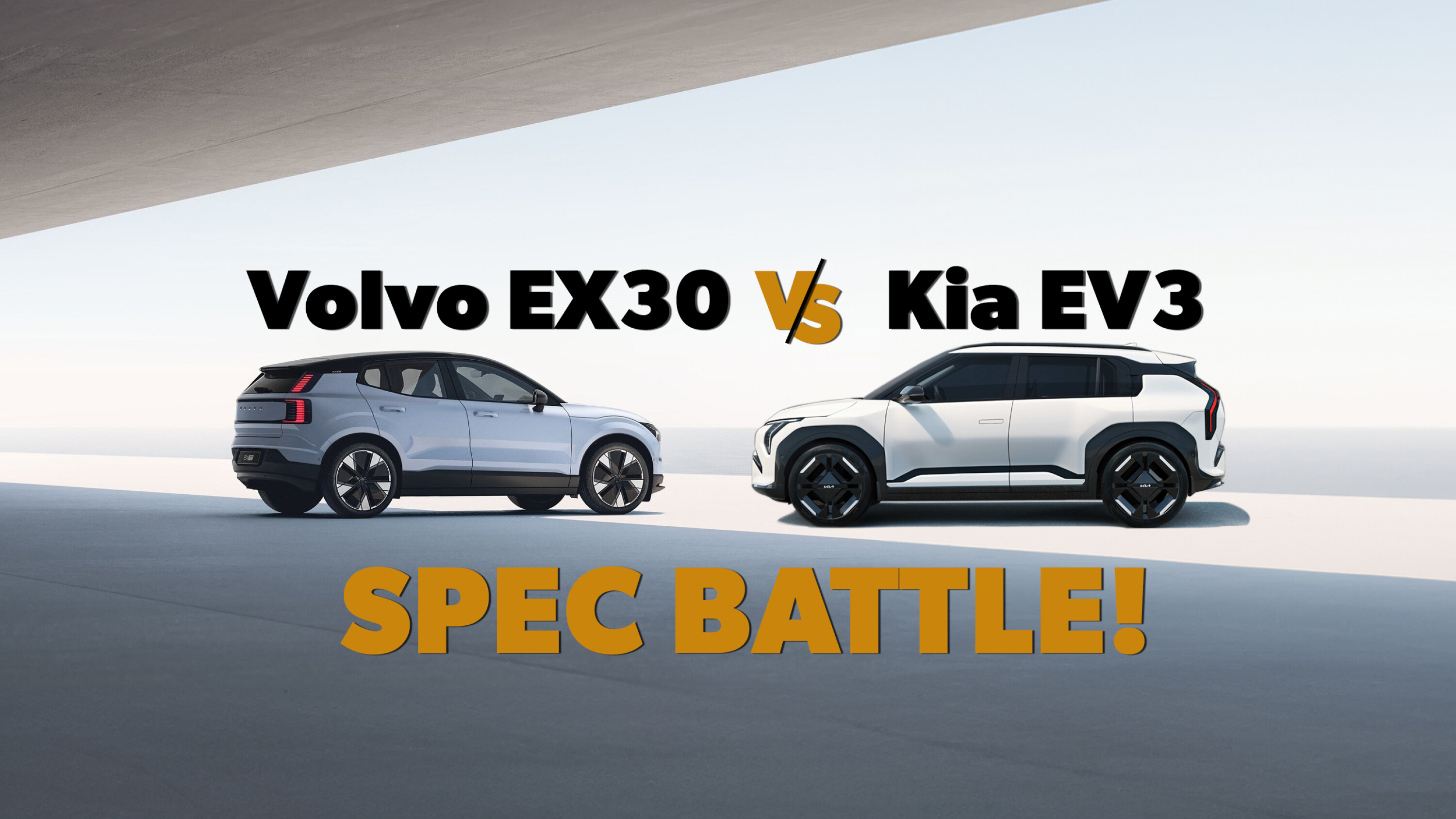WE’RE AT a point in time of profound change.
Australian manufacturing is winding down. Electrification is ramping up. And technology is increasingly taking control. The fast road ahead is anything but conventional. And it is here where our protagonists meet.
Watch the full video comparison: Mercedes-AMG E63 S v Tesla Model S P100D v HSV GTSR
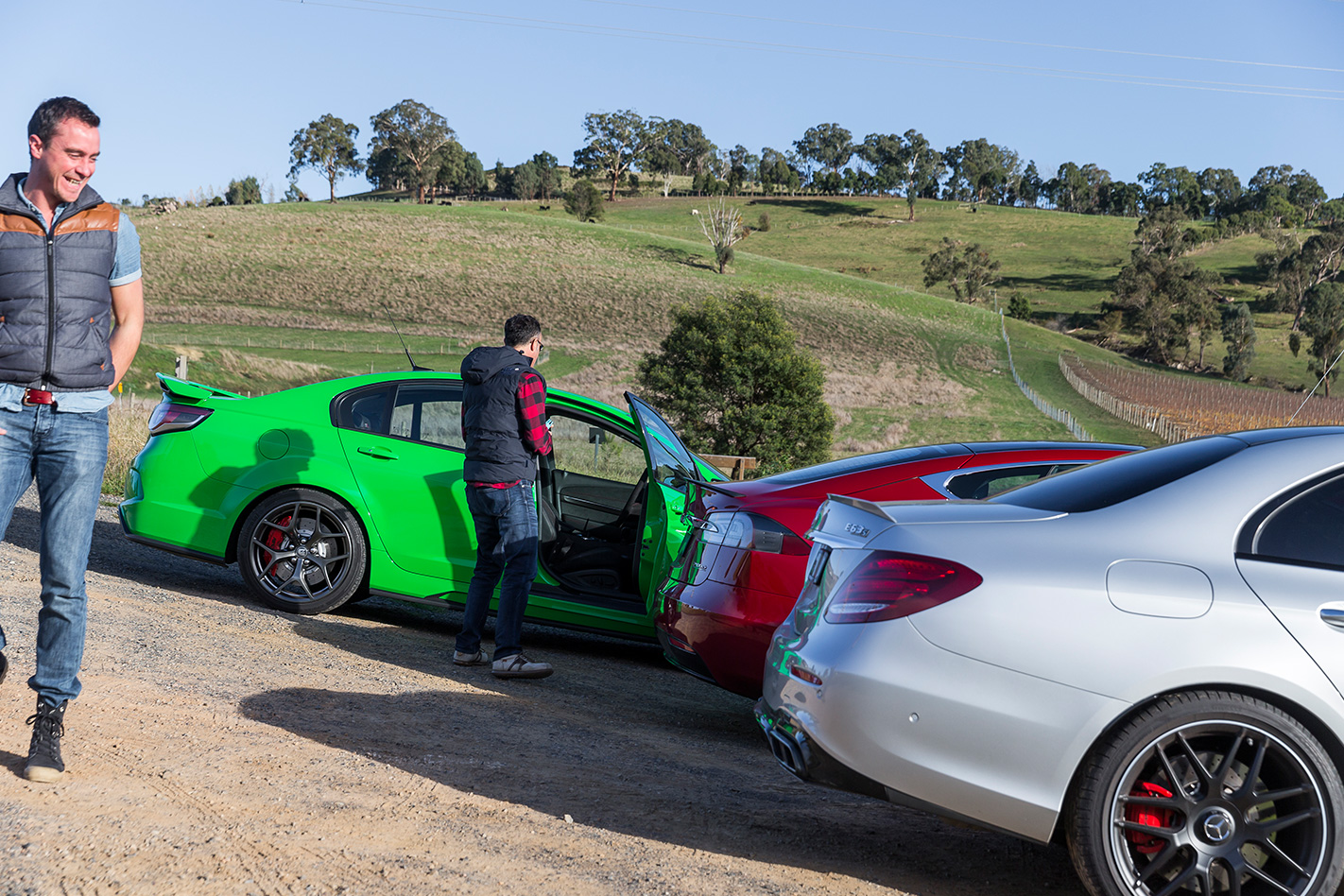
And yet there really isn’t the gaping divide between the rear-drive, supercharged V8 HSV, the all-paw twin-turbo V8 AMG and the all-electric, all-wheel drive Tesla that the specs suggest. Each can warp time and speed while simultaneously accommodating five astonished souls. Each is the ultimate expression of athleticism in their respective spheres. And each one’s worth relative to the other will inexorably alter over time, as evidenced by the values of most chrome-bumper Aussie legends.
The clock is, of course, ticking for the GTS-R. Get in quick if you lust after one of the 1000 sedans or 600 Maloo utes, both bearing a 5kW upgrade to the US-built 435kW/740Nm 6.2-litre LSA V8. We’d wager the HSV’s value will skyrocket even before local production ceases forever come this October. Especially as greed is already driving the now sold-out $170K W1 with its ballistic 474kW/815Nm LS9 V8 towards $300K and counting…

That’s in contrast to today’s E63, which is probably the most amorphous in a quarter of a century of fast E-Classes, which started with the Porsche-built 500E of 1991. Is it a C220d from behind? What a wasted opportunity, though a unique AMG nosecone does at least create an aggressive visage.
There’s no questioning the menace of what lurks under the bonnet, though.
Tested here in potent E63 S guise, which adds an extra 30kW/100Nm to take total outputs to 450kW/850Nm, the E63’s 4.0-litre twin-turbo V8 is a new high-water mark for the super-sedan breed. Paired to AMG’s nine-speed multi-clutch transmission that sends drive to all four wheels, the AMG’s drivetrain also highlights the unprecedented level of engineering transformation undertaken by the Affalterbach virtuosos.
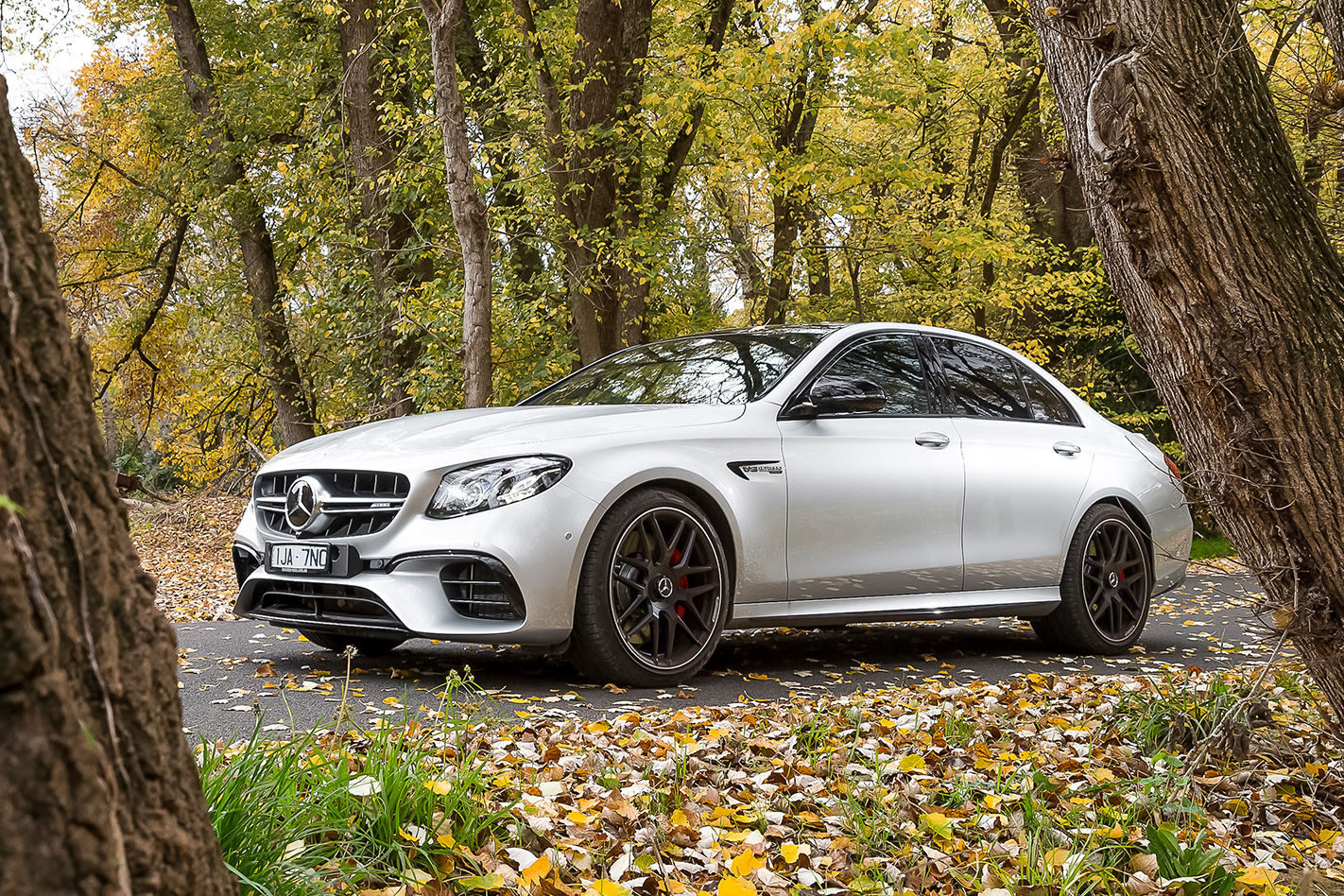
Unique suspension and brake components redefine the ultimate E-Class too, with torque-steer-quelling components for the four-link front axle forged from aluminium. Similarly, dynamic engine mounts change stiffness according to prevailing driving and road conditions, reducing inertia for greater dynamic precision. It’s on the track where such progress really matters, though one Mercedes-AMG insider reckons the E63 S’s greatest achievement lies in its ability to rip through the Nurburgring by day and strut to the opera by night.
But who needs the opera when you have an exhaust that sounds this good? Menacing at idle and deep-throated at full-noise, the E63 S’s soundtrack seems to channel Pavarotti himself.
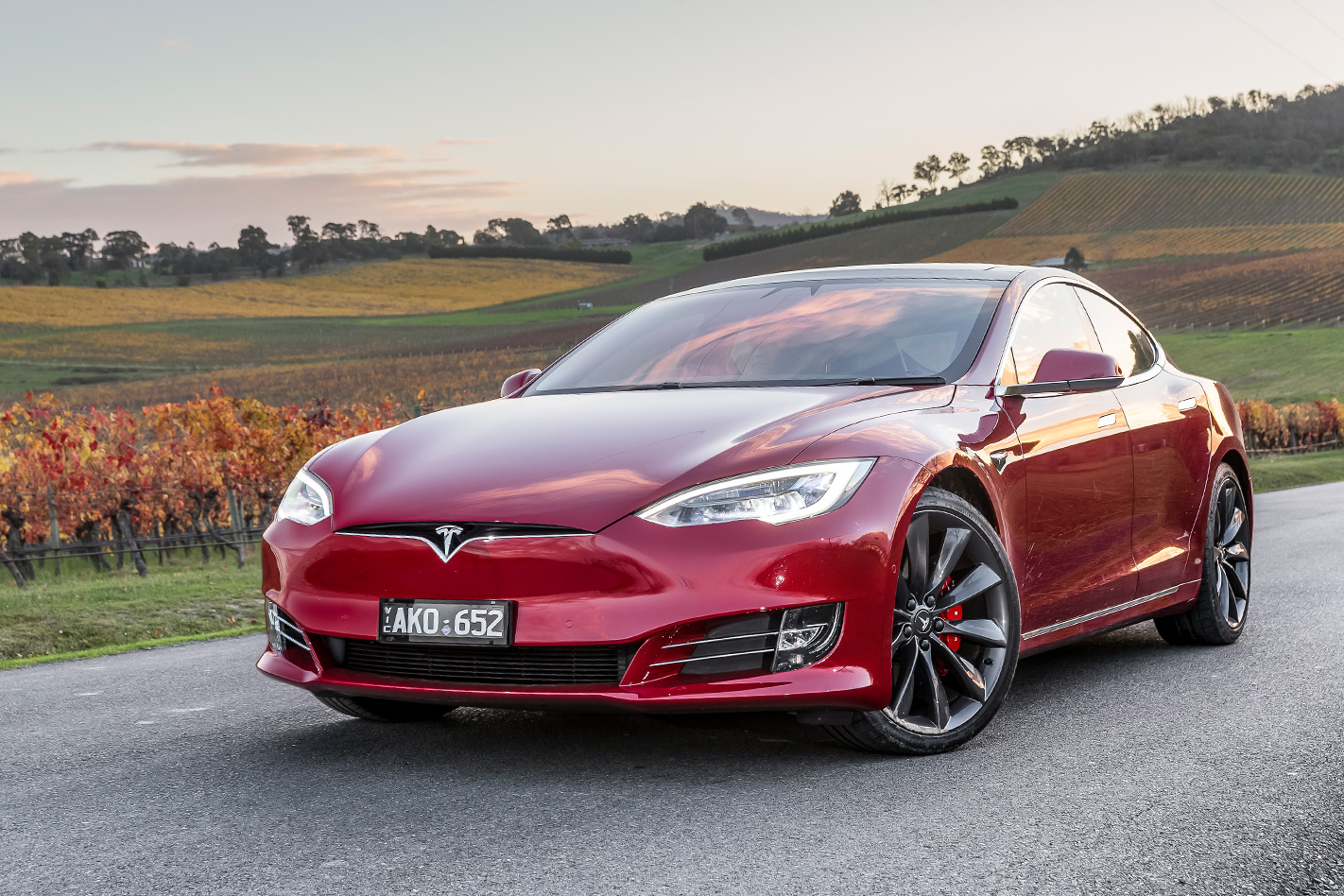
That facelift coincided with the introduction of one of the fastest accelerating production vehicles on the market. The P100D (‘P’ for performance, 100 for 100kWh lithium-ion battery and ‘D’ for dual-motor all-wheel drive) might only be good for 250km/h, but a claimed 2.7-second 0-100km/h sprint is quicker than flagship models from Lamborghini and Ferrari. And with a claimed range upwards of a 600km between charges, the Tesla’s on-paper promise is verging on stupefying.
Unfortunately, the fact our P100D is a customer car that has already been sold meant we couldn’t put Tesla’s lofty performance claims to the test at the dragstrip. But even if we could have, AKO-652 is saddled to the gunwales with weighty options so probably wouldn’t have delivered a representative time. A glass roof, 21-inch wheels, premium seats, high-end audio and a heap more blew our Model S out towards $300K. That’s unscrupulous W1 money.
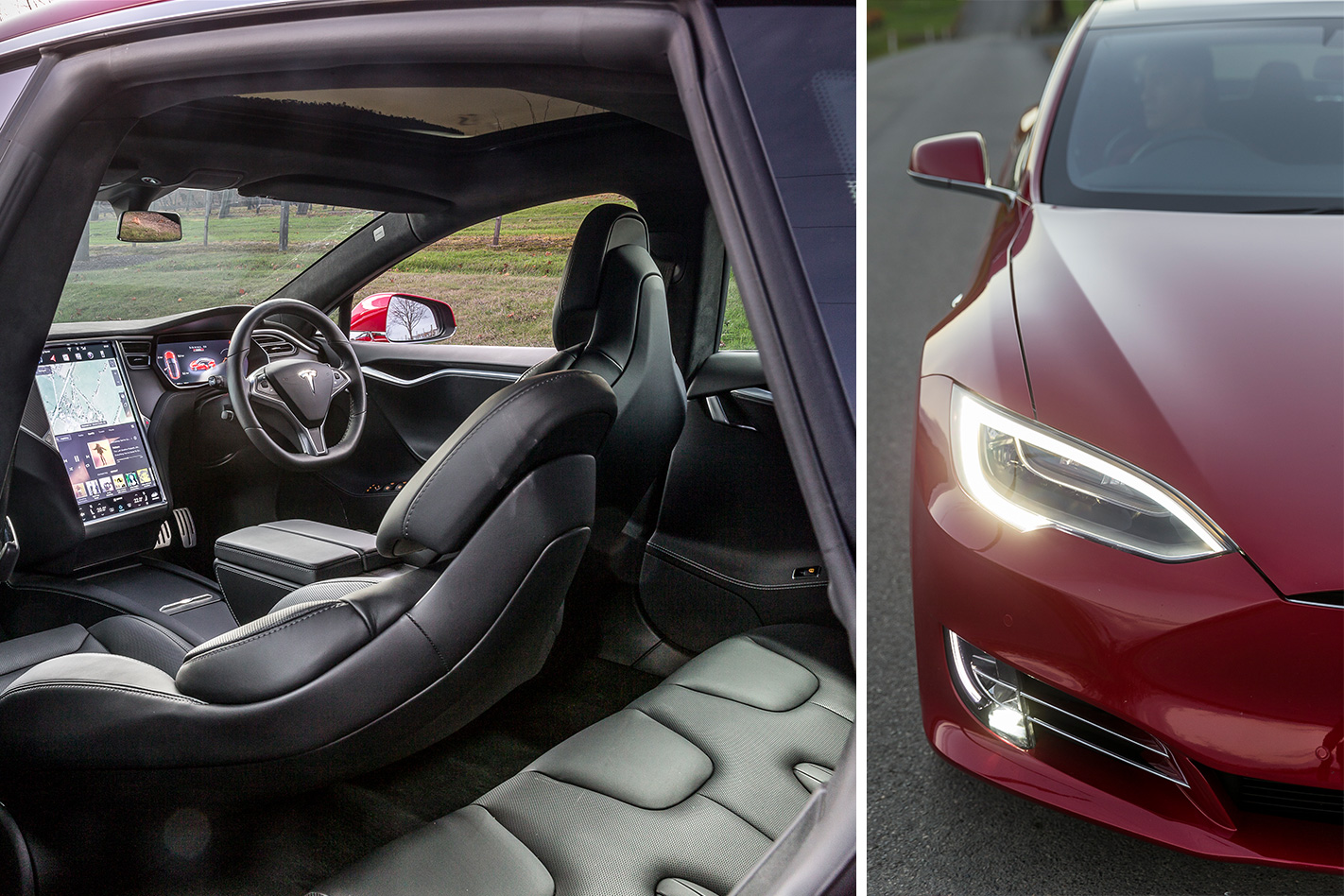
Like most EVs, easing off the throttle immediately engages the regenerative dynamo-like gubbins for an effect akin to deploying a small braking chute. Pivot your right heel forward again and you’re powering on once more. It’s just like foot-operated Scalextric.
V8 fans will rejoice that the Mercedes feels at least as hungry for speed. A blistering 11.3sec time to 400 metres means it’s probably not too far behind the Tesla. The AMG’s appetite for destroying distances is, if anything, even more theatrical, because of the polyphonic crescendo accompanying each rising rev. Toggle the Drive Mode selector to Sport Plus, and your peripheral vision blurs as the road is reeled in relentlessly.
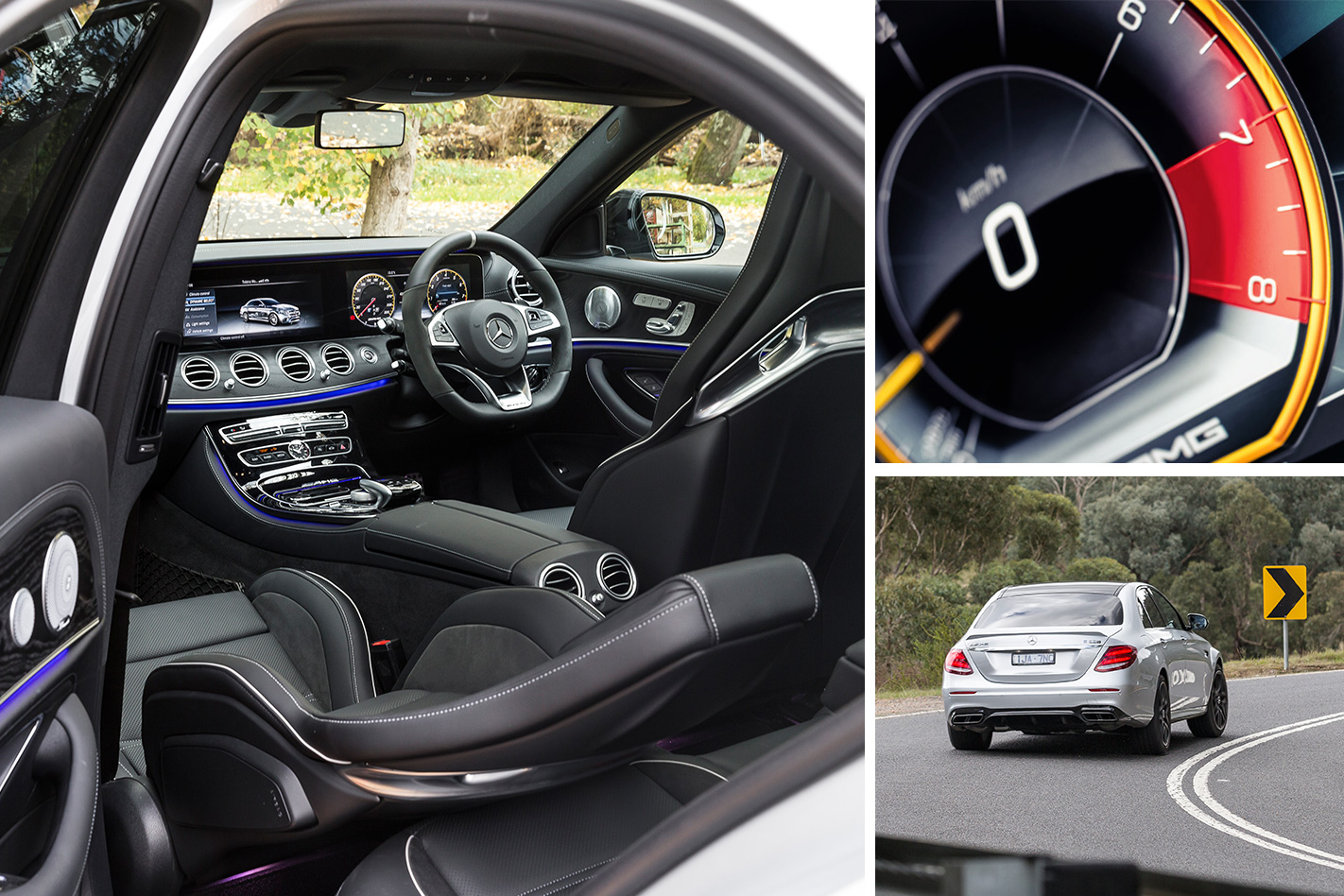
You’d be forgiven for thinking that in such high-tech company the ageing HSV could feel a little underdone.But if the E63S goes like lightning then the GTS-R is pure pushrod thunder. Its supercharged howl at higher engine speeds is addictively rousing, and while its times at the strip were slightly off HSV’s claims (4.8sec to 100 versus 4.5s), in no way does the GTS-R feel undermined by its comparatively old-tech spec. Its combination of a manual ’box and rear-wheel drive may have seen it scrabbling for a foothold where the AWD AMG would simply hook up and go, but as its 400m time of 12.4s proves, the Holden still hammers.
So, unfortunately, does its yearning for 98RON premium unleaded. Over two days of hard driving, the HSV records an on-test consumption figure of 16.1L/100km, only slightly more than the altogether harder-charging E63’s 15.3L/100km, though the German car does boast a ‘Half Engine mode’ tech, which disconnects cylinders two, three, five, and eight to save juice when under light loads.
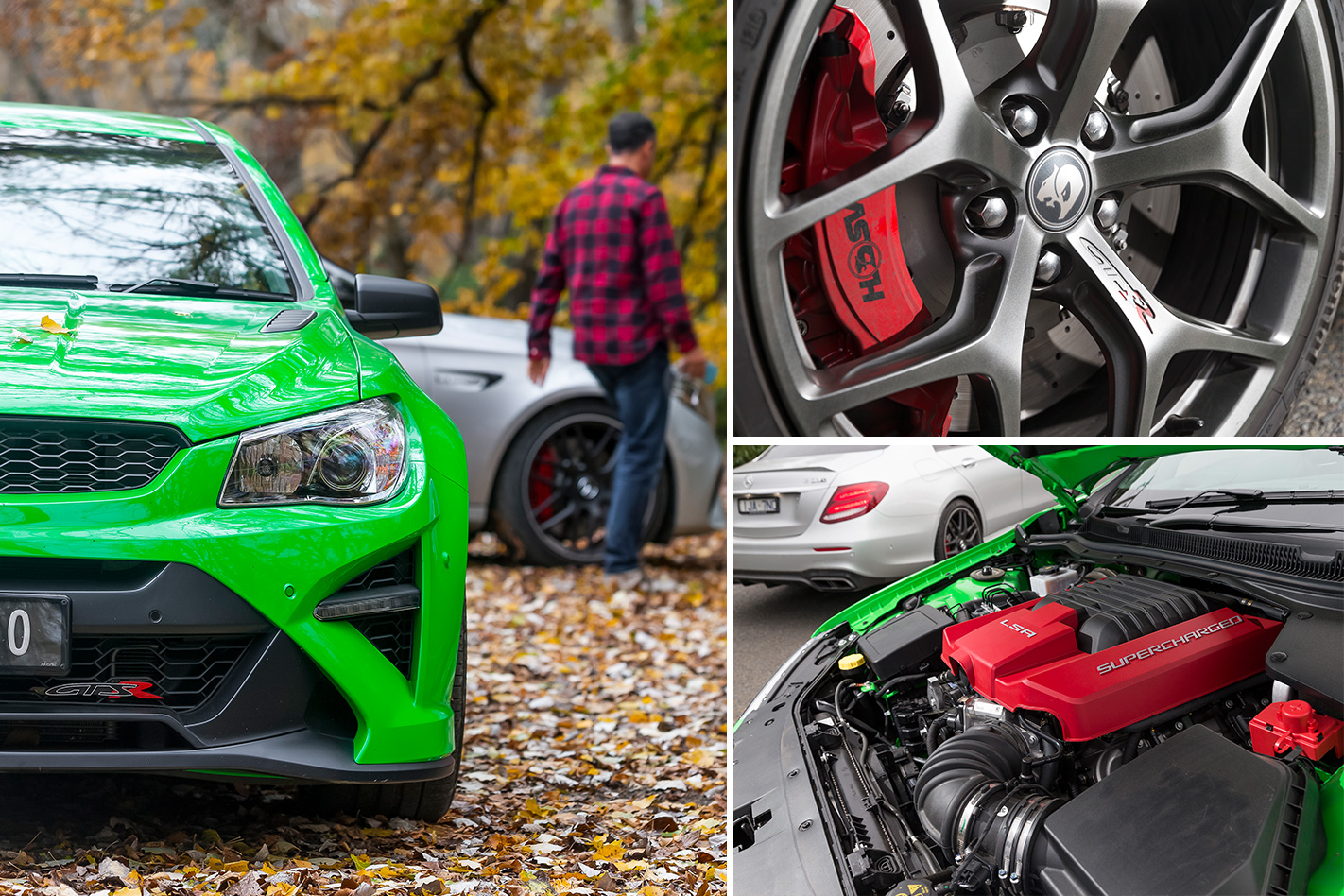
From an enthusiast’s point of view, the Model S is ostensibly a grand tourer, not a sports sedan, and the reason why starts and finishes with the steering. No matter which mode you choose – Comfort, Normal or Sport – the wheel lacks sufficient precision. Clearly Tesla has dialled in a ‘sneeze’ factor to ensure minute movements don’t result in any nervousness at speed, but the upshot is dullness. A clearer sense of connection and more road feedback is much needed.
That said, the P100D’s wide track, long wheelbase, AWD and low centre of gravity conspire with the double wishbones up front and multi-links out back to provide wonderfully flat and composed handling, even at comically quick cornering speeds. This thing is remarkably unfazed by sudden shifts in direction. Bodyroll is so minimal to be virtually undetectable.
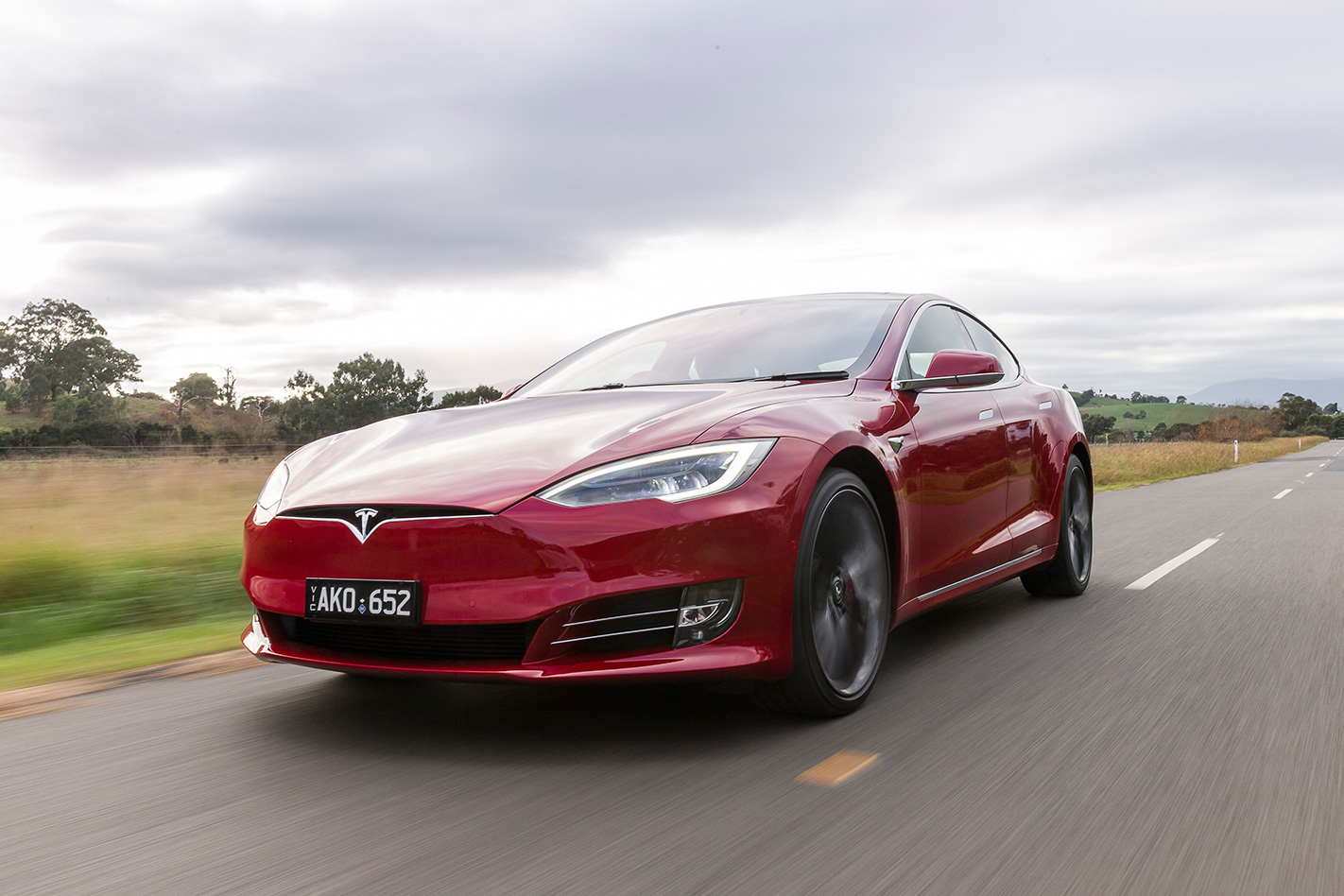
Conversely, the E63 S is an out-and-out and always-on sports sedan, despite Mercedes’ vaunted Air Body Control multi-chamber air suspension. A firm to hard ride, even in Comfort, coupled with ever-present road noise intrusion, underscores the German’s fanatical performance focus. The AMG’s flat-chat autobahn body control compromises the relaxation and refinement you might expect from an E-Class. Never switching off, the AMG is afflicted with performance OCD.
But what commanding and assertive handling traits await. The multi-link rear is toughened and employs a specific rear axle carrier for the wider track. More bracing, better mountings, stronger welds and an AMG GT R-style tubular anti-roll bar aid stability.
The variable ratio steering is crisp in its response too, with the E63 S’s AMG-specific tune providing a reasurring amount of communication. As a connection between road and machine, the AMG is magnetically fluid, imbuing a level of high-velocity confidence and maturity that – whether wet or dry – is both exhilarating and gratifying.
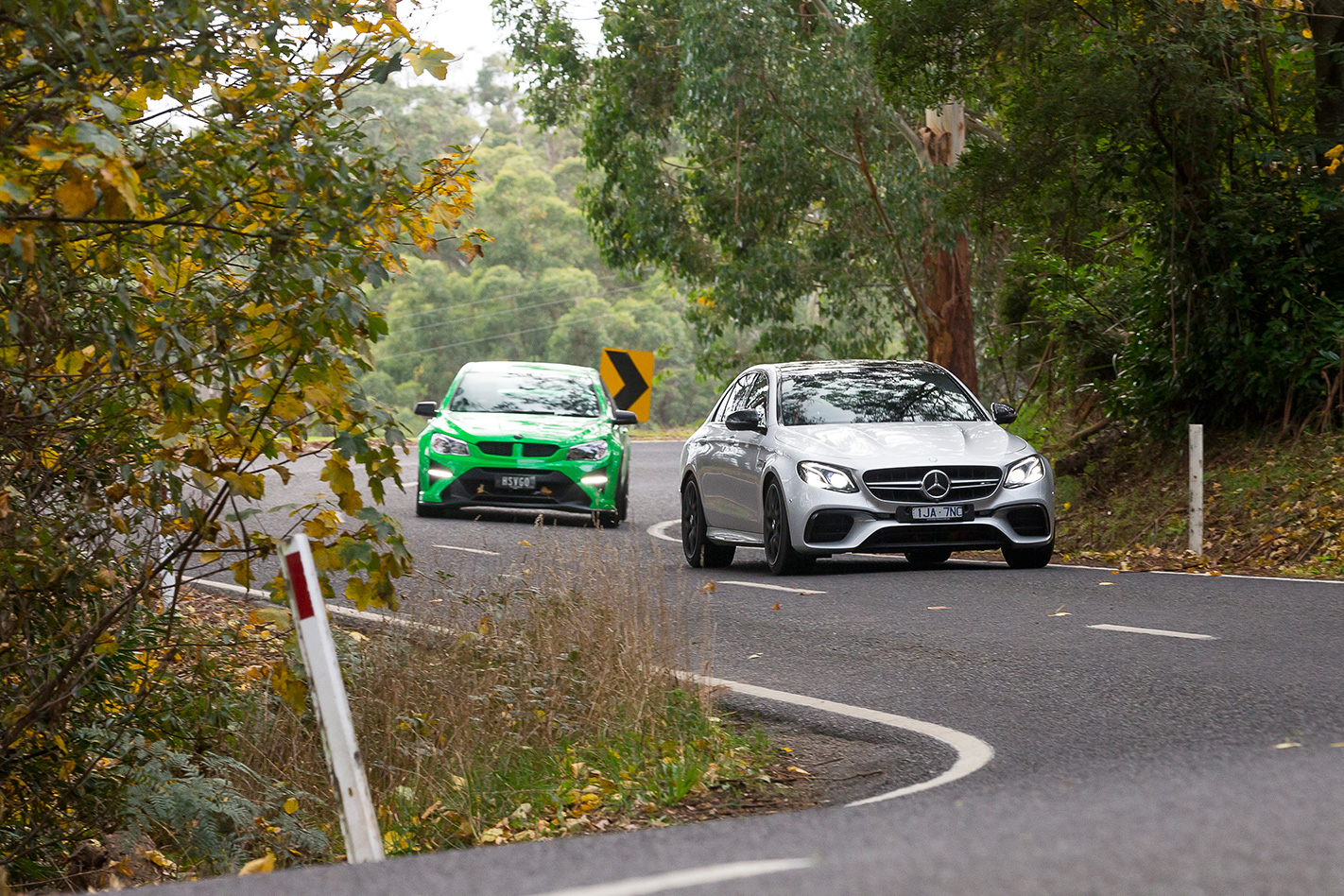
In which case you can activate Drift Mode. The three-stage process for tail-happy fun begins by selecting Sport Plus or Race, then using both hands to pull the paddle shifters. This then kills the ESC and directs 100 percent of torque to the rear axle.
So, after such Teutonic mastery, how can the HSV hope to compete? Even with the GTS-R’s magnetic ride control dampers, that heavy, ageing Zeta platform couldn’t possibly deliver the same dynamic dexterity, right? Well, no. But for cohesion, the local car’s efforts are extraordinary.
Fluent and measured in its reaction and load, the Holden’s helm feels completely in tune with Australia’s unique conditions, being beautifully receptive to inputs and naturally connected. The driver is never in doubt where the front end is pointing.
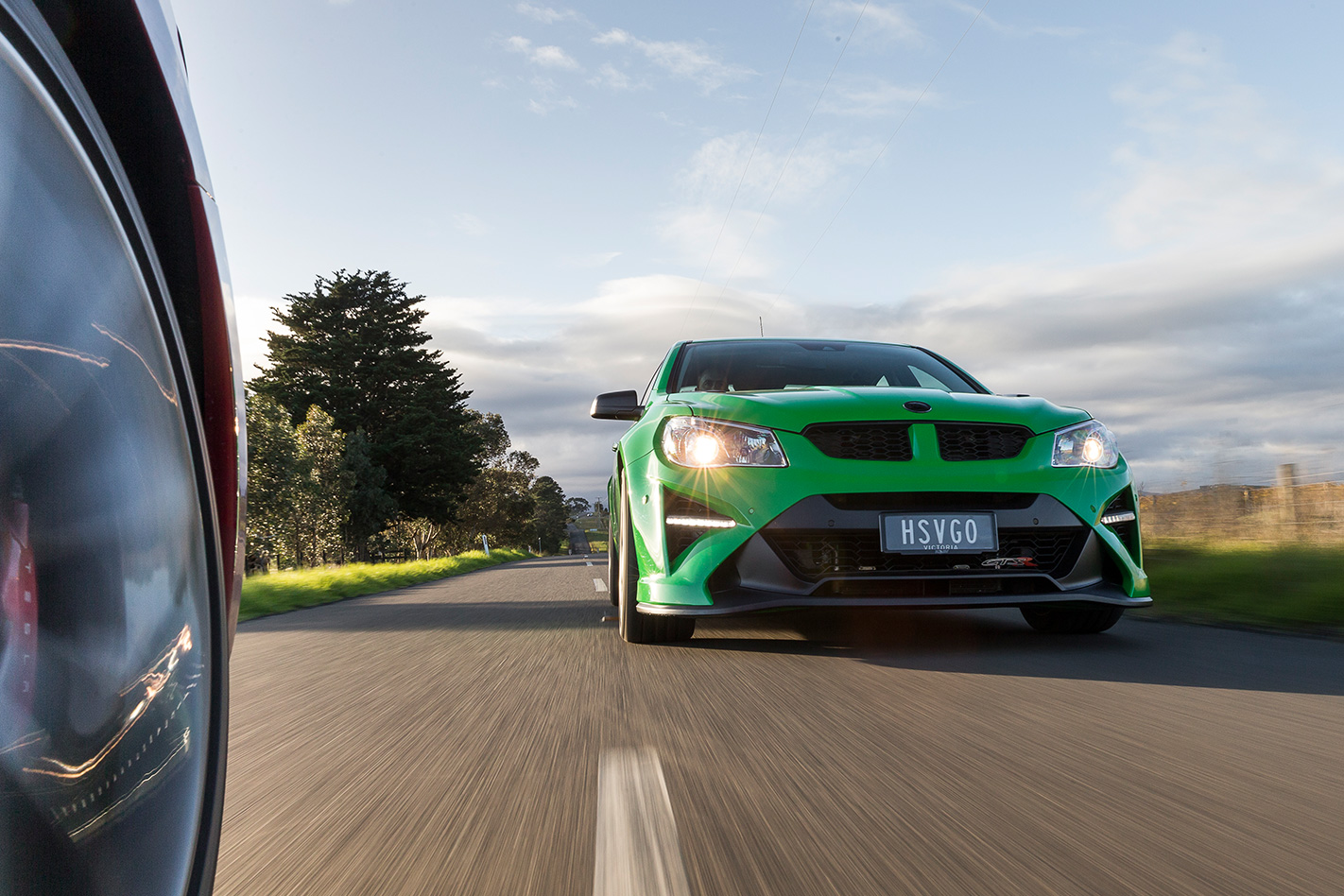
Dynamically the GTS-R is much more than simply 50 percent of the E63 S that its half-price positioning suggests. For this reason alone, it’s hard to argue with the HSV’s value proposition. And while it’s not as quick in a straight line, its underlying compliance and long-distance ability makes it an altogether more cosseting and quieter car than the E63 S.
Fitted with the trio’s best front seats – generously padded and deeply bolstered – the HSV’s cabin is another high point, with a fine driving position and swathes of Alcantara and brightwork lifting the ambience over that of a regular VF Commodore. The GTS-R also sidestepped the squeaks that blighted the Tesla and the Mercedes on test, though a fiddly touchscreen and crude graphics won’t keep Audi up at night.
Things are much more modern in the E63, with its expansive dash screen, multi-configurable multimedia and expensive, glossy materials, though the cheapo column shifter lets it down. There’s space aplenty for adults to luxuriate in, the optional racy sports buckets are firm but pleasingly supportive and all rear seat aspects are pitch-perfect. But the rattles proved infuriating. And there is way too much road noise.

Packaging wise, the Tesla is an enigma. It’s great up front, but the rear seat area gets off to a bad start with low door apertures, and is then compounded by a high floor that the EV battery chassis requires, which dictates an exaggerated knees-up posture. Trust us, taller passengers will moan. Exacerbating this is an oddly angled backrest, scant thigh support and no overhead grab handles, storage or cupholders.
At least the cabin is hushed at speed, and that long and wide hatch area adds another dimension of practicality compared to the traditional boots offered in the AMG and HSV.
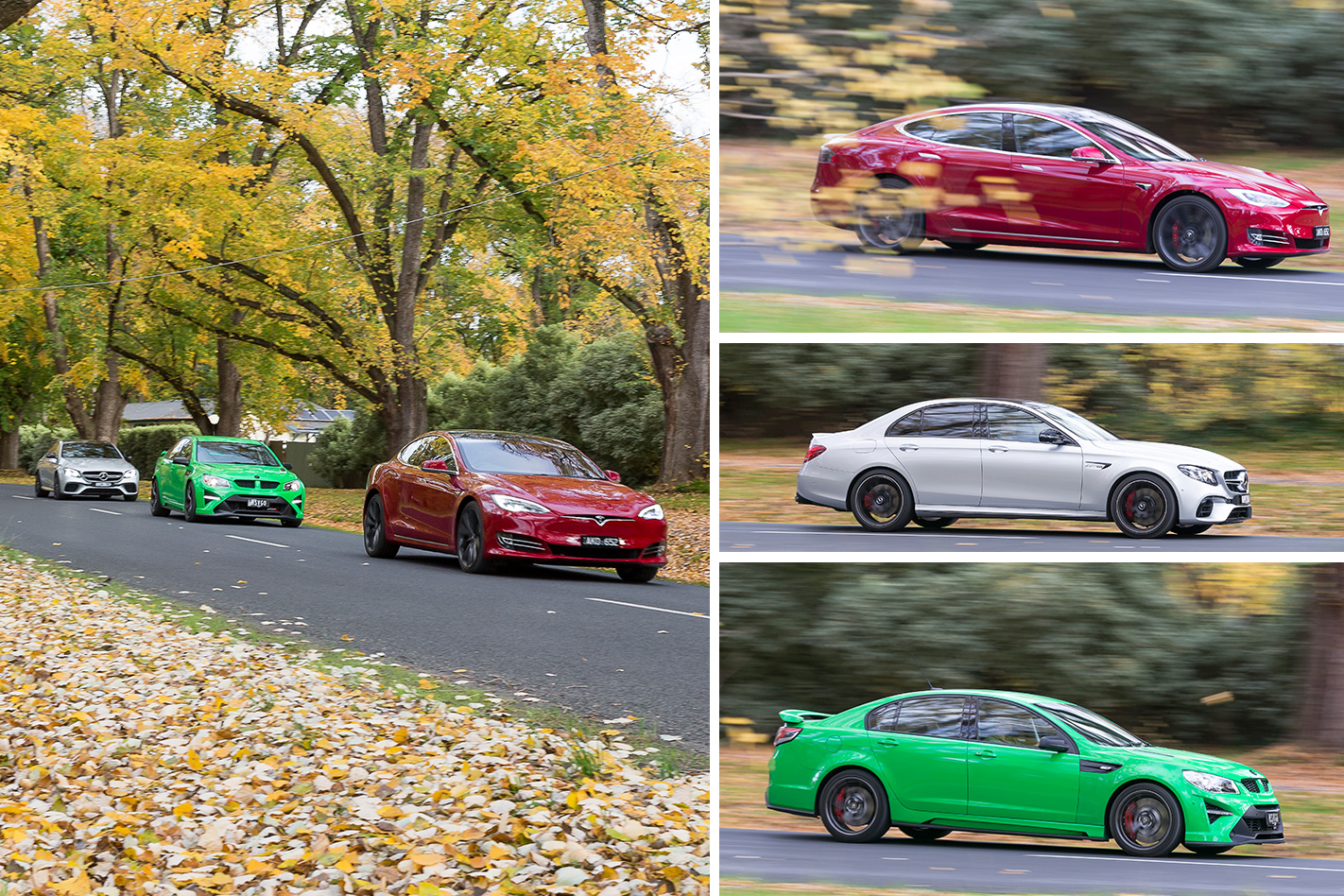
Time is just about up for the GTS-R, but its place at the apex of the Aussie greats scoreboard is assured. The HSV is today’s Torana A9X moment. If you’re in a position to buy but instead dither, you’ll kick yourself in decades to come. Guaranteed. It’s a properly fitting finale.
Which leaves the force-of-nature E63 S. The big German pushes boundaries as effortlessly as it pounds the existing class benchmarks. But there’s no doubt that the convergence of speed, dynamics, safety and, yes, even value, elevate this Mercedes-AMG onto a new plane of super sedan performance.
